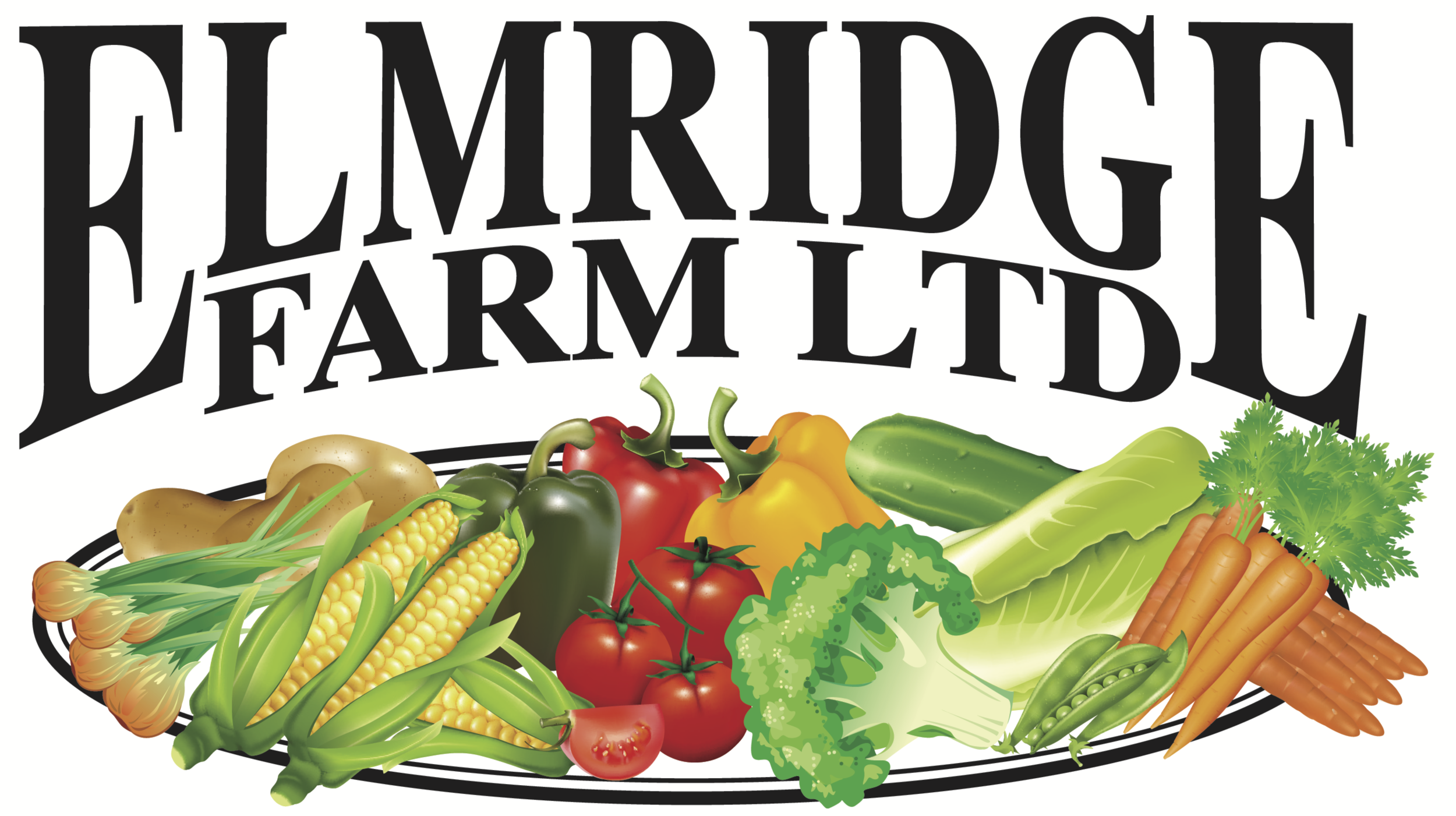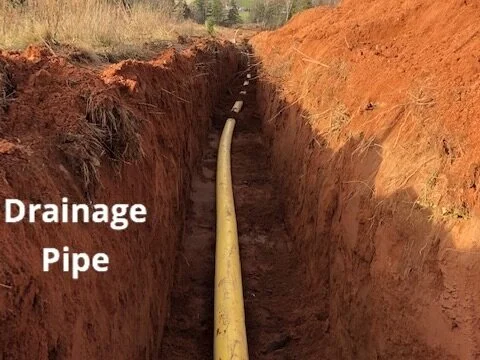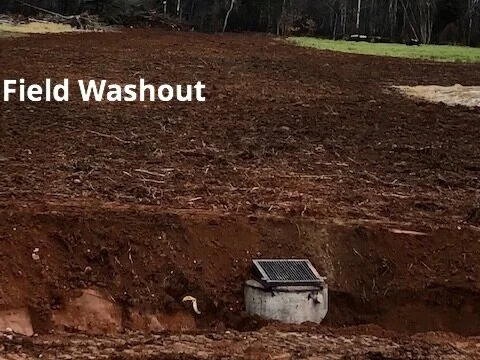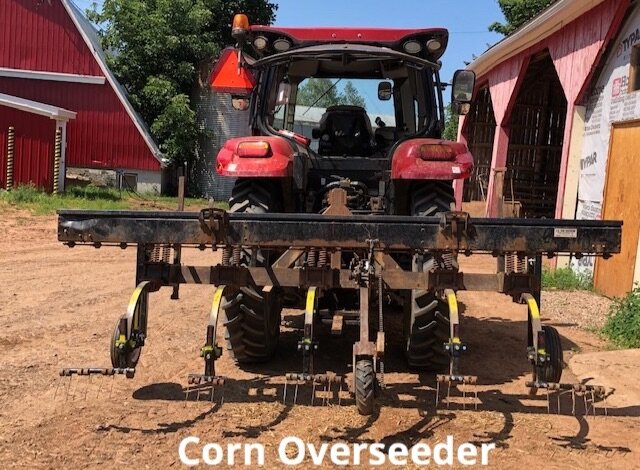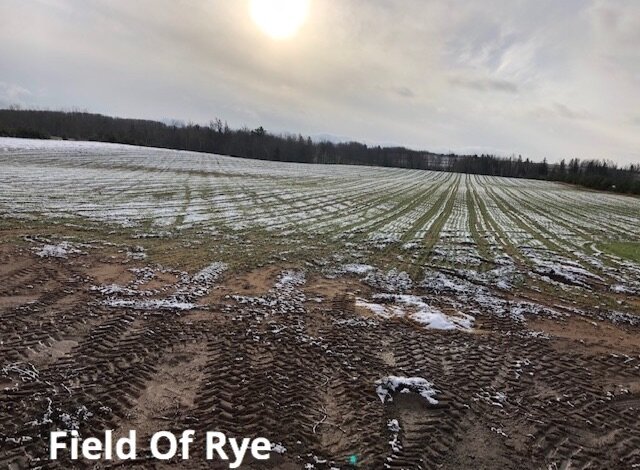December 17th, 2020
We are officially done messing about in the fields for 2020!
Our final planting of carrots sized up enough that we were able to run the machine harvester through and get most of them. It was a surprise to me because in mid November they were barely big enough to warrant selling as bunched carrots. The warm weeks from mid November to mid December are to thank for that. Carrots will continue to grow at full speed in temperatures above 10 Celsius and won’t actually stop growing until the ground freezes hard. The forecast late last week was for a cold snap (yesterday) so it was take a stab at it or forget it. We were able to get an additional 10,000 pounds of carrots in the medium to small range with incredible flavour, texture and very thin skin so they don’t need to be peeled. In our household a “no peel” vegetable is always at the top of the list.
December 17th, 2020
Leading up to the end of the season we spend a fair bit of time and money chopping and applying hay or straws mulch to any fields with no vegetation or plant debris protecting the soil from water and wind erosion during the winter months so I thought I’d share what we go through to ensure our soil stays in the field and out of the waterways and Bay Of Fundy. Twenty to 30 years ago there was very little attention paid to erosion so we are still in the process of solving problems and honing out erosion control systems.
As crops are harvested throughout the summer and fall we are very religious about getting a cover crop (a crop to protect and build soil; it is generally just incorporated back into the soil without harvesting anything) established to hold the soil in place, keep trapping carbon to build soil organic matter, capture excess nutrients so they aren’t wasted or turning babies blue ( no one wants their kid to look like a surf!) and feed the zillions of microscopic soil critters that help make natural and organic farm practices. Any fields harvested between June and August are immediately seeded down to barley and vetch mixed. The barley quickly builds organic volume while the vetch (a legume) traps nitrogen from the air and deposits it in little nodules on the roots and also exudes it into the surrounding soil where the barley quickly takes it up. The result is that we have fields of nearly mature barley blowing in the wind in November and December. It’s a great way to confuse the tourists!
Any fields harvested in September or October are immediately seeded to cereal rye and anything after the end of October isn’t worth planting anything at all because it with barely even sprout. The rye grows vigorously until the ground turns to concrete and then the minute the snow is off of it in the spring it is already green and takes off with a vengeance. We then mow a lot of the rye before planting the next seasons crops and bale it as mulch to be used to protect open ground in the coming fall.
Sweet corn is a case all its own. When the corn is about two feet high we go in with an Elmridge engineered piece of equipment called an overseeder. It sprinkles a very light rate of rye grass and red clover seed onto the ground and small steel fingers scratch it in to the soil. When we finish picking each field of corn we don’t till anything in. We just mow the stalks off and let the rye grass/ red clover mixture grow. The following spring it grows incredibly fast and we have on some years made high quality hay out of it. Other years (and depending on if the field needs extra organic matter) we will just mow it off to help build the soil.
Unfortunately to grow vegetables on any sort of scale and at an affordable cost requires laying the ground bare at least once per season. With the seemingly more severe rain events (September of 2019 delivered about 10 inches in six days and caused havoc in many fields that otherwise aren’t a big problem) there are going to be times when some erosion does occur. With this in mind we are experimenting with catchment ponds where water runs off of fields and toward the river system. The idea is that if we do get a severe rain event the pond will slow the water down enough that the vast majority of sediment will stay in the pond and out of the stream.
In one area of rented fields that we farm there has been a recurring problem of water coming from fields above and gathering momentum to the point where there were gullies up to three feet deep on one end of the field after the September 2019 rain storms. To try to fix the problem we dug some shallow ditches and built a catchment basin at the top of the fields and installed a 900 foot long pipe from the catchment basin to the wood land below the fields. We also dug a small pond where sediment has been collecting in a small delta since the land was cleared several hundred years ago. The top soil was close to eight feet deep and we hauled 25 dump truck (actually tractor and dump trailer) loads to fill the gully that formed in 2019. The hope is that we have solved the problem in this case.
It’s not a cheap endeavour to mulch fields with hay or straw before winter, so my guess is that less than 10% of farmers go to the trouble of applying mulch to reduce or stop erosion. We have chopped and blown over 200 round bales onto our fields in the last week. At a conservative value of $50 per bale we are over $10k in material alone. Add to that two tractors and bale chopper at over $200/ hour combined to properly protect about 30 exposed acres and it’s no wonder not many of us are crazy enough to spend the cash when most farmers don’t even gross $1000 per acre. The fact that we farm very intensively means that we gross much more per acre and therefore have many fewer acres to cover to make a living.
I have always been a firm believer that if your neighbors don’t think you're crazy you aren’t trying hard enough. Well let me say that my neighbours think I’m certifiable……and I’m proud off it!
Keep eating your veggies!
Greg
